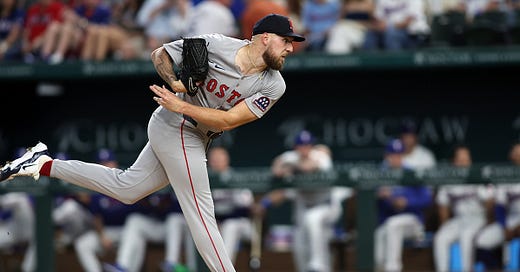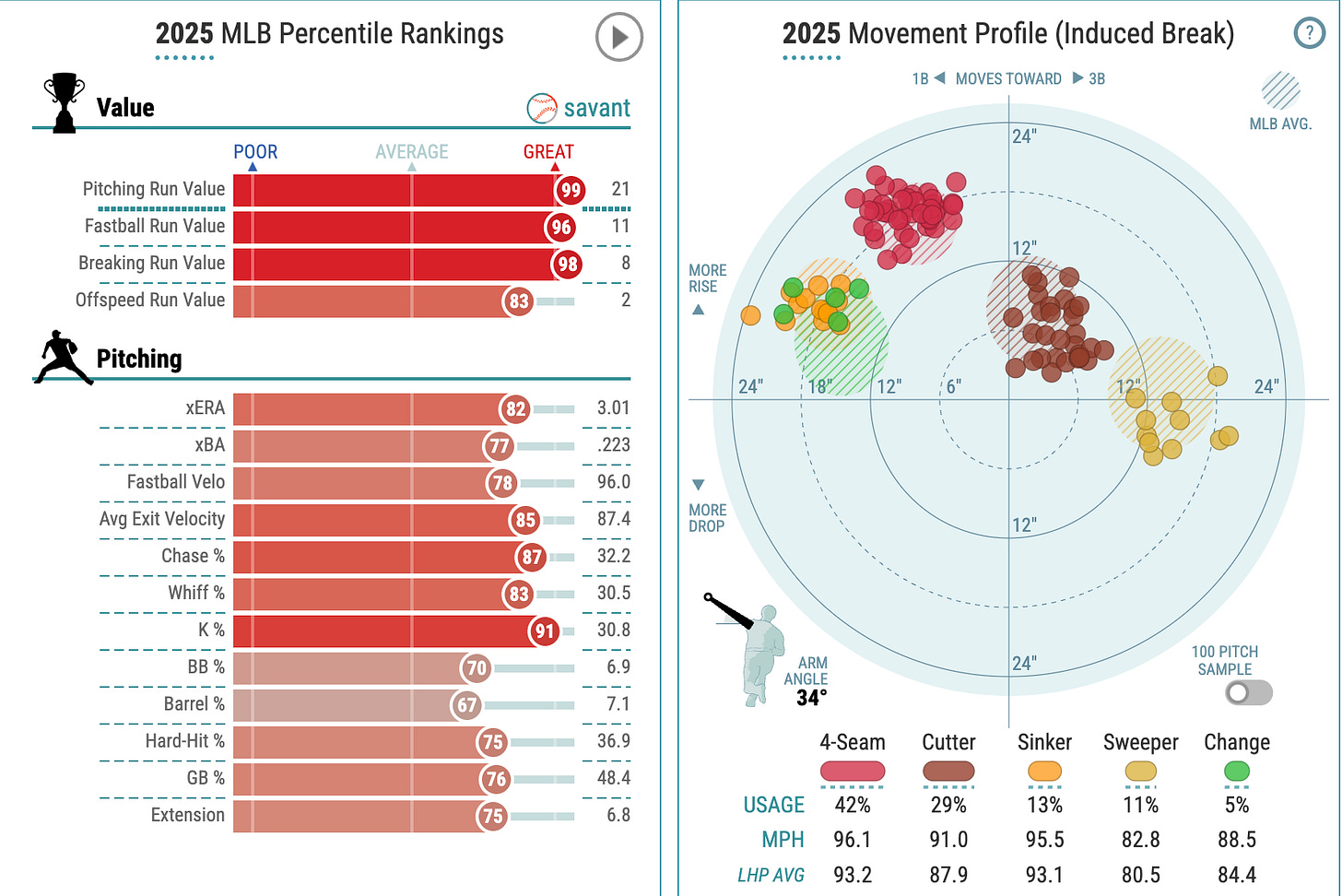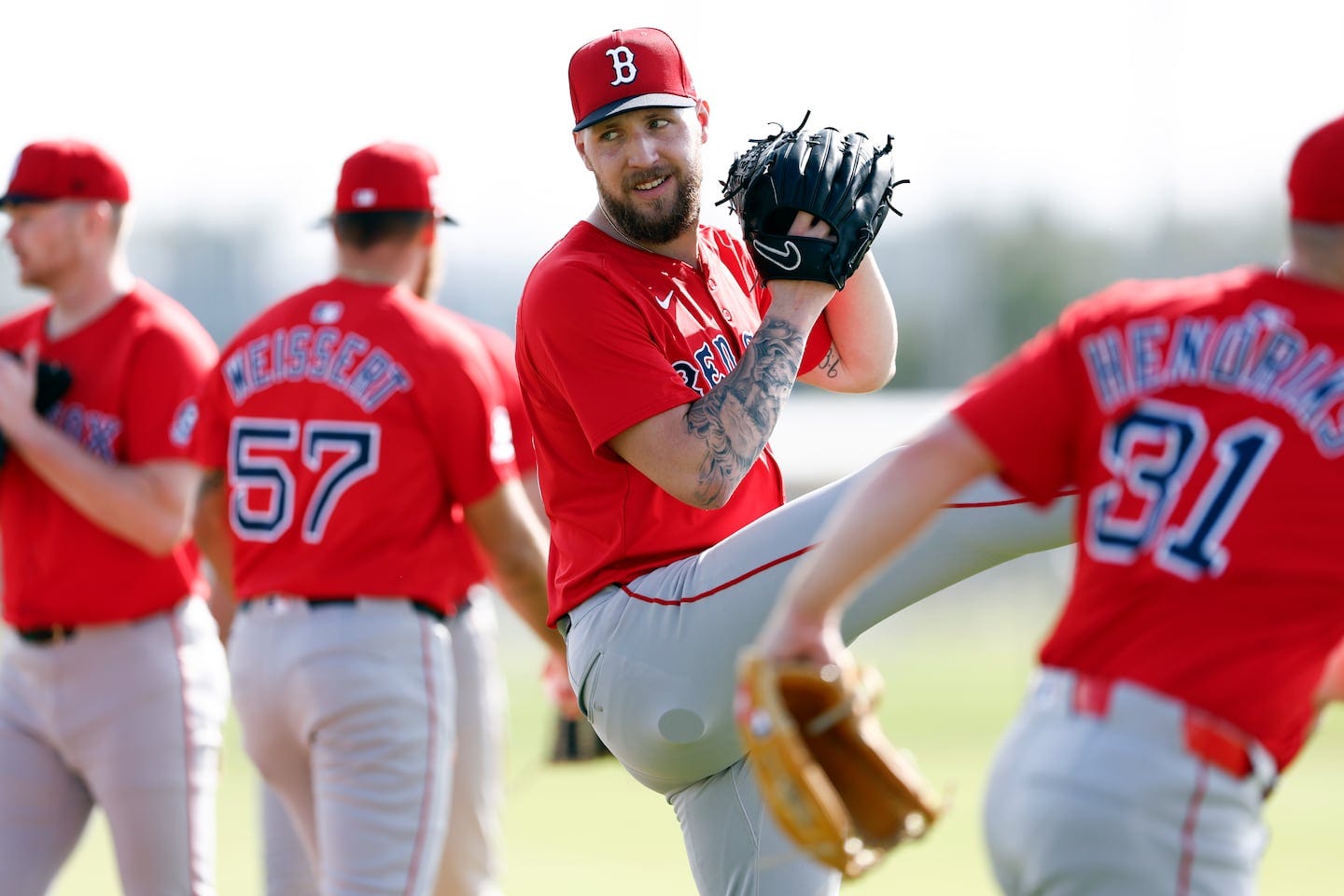Finding the Limit: How do the Red Sox Manage Crochet’s Workload?
Looking at how much can the Sox ride on their new ace's arm...
In need of starting pitching and top free agents Corbin Burnes and Max Fried off the board, the Red Sox turned to the trade market to acquire their ace. While the team gave up hefty prospect capital in top-catching prospect Kyle Teel and first-round pick Braden Montgomery, Garrett Crochet has been everything the Red Sox had envisioned and more. The Red Sox also locked down their long-term ace for the next six years in late March, squashing any talk of the hard-throwing lefty leaving Boston. While Crochet leads the league with 102.1 innings pitched, questions have started to rise surrounding his workload with his injury history and second-half management with the White Sox last year. As the Red Sox narrowly hold a wild-card place, the dependence on Crochet and managing his health will be a hot topic as the season progresses.
Crochet's Magical Season Thus Far:
The Red Sox invested a lot into starting pitching this past offseason, with Crochet being the marquee addition and Walker Buehler signing a one-year deal as well. With the expectation that Tanner Houck would continue to progress following his All-Star season last year and Brayan Bello would have a resurgent year, the Red Sox banked on having one of the best pitching staffs in the league; that hasn't been the case at all, however. Crochet has been the consistent, dominant force through the turmoil, playing himself into AL Cy Young consideration. The lefty is having a career year with a 7-4 record and 2.20 ERA while leading the league in innings pitched and strikeouts. He's also sporting a career-best in FIP, WHIP, HardHit%, and many other peripherals. If Tarik Skubal didn't exist, I would pick Crochet as the AL Cy Young front-runner at this point in the season, ahead of guys like Max Fried, Kris Bubic, and Hunter Brown. As a fan, I haven't felt this confident in a pitcher since Chris Sale in 2017 and 2018. His performances and consistency, going at least seven innings seven different times in 16 starts, have been a model for the Sox's starting pitching resurgence these last two weeks. However, with the rate he is going, he is expected to fly past his season-high in innings pitched and batters faced, raising questions about his workload.
The White Sox Management of Crochet:
Garrett Crochet's trajectory as a starting pitcher has been far from normal. For one, from when he was drafted in 2020, he skipped the minor leagues in the COVID season and went straight to the MLB roster to help the White Sox in their playoff push. He then spent 2021 as a reliever and missed 2022 with Tommy John surgery. After he appeared in a few games in 2023 as a reliever coming off surgery, the White Sox announced Crochet as their opening-day starter in 2024, marking his first year as a full-time starter, and he didn't disappoint. He earned himself an All-Star appearance and had a 3.02 ERA and 2.38 FIP through June.
In Crochet's last start of June 2024, Crochet went seven innings, giving up two earned runs to the Rockies; that was the last time Crochet pitched more than four innings for the White Sox for the rest of the season. As the trade deadline approached, the White Sox decided to cut back Crochet's workload entirely going into July; they established themselves as one of the most pathetic teams ever to grace the sport at that point, so they were only concerned with protecting Crochet for multiple reasons. Coming off TJ surgery the year before, the White Sox were concerned with building up Crochet's workload too much, as it was also his first season as a starter; for this reason, it makes sense why he typically didn't pitch over 70 pitches in an appearance. The other reason was trade talks, as many teams were rumored to swoop in and make a huge trade to bring Crochet to a contending playoff team; ultimately, he was never dealt. Crochet ended the year with 146 innings pitched, which was significantly higher than his previous record of 54 innings pitched, yet the White Sox held him back after three months; he pitched less than 45 innings in the last three months.
The Red Sox's Potential Approach:
Alex Cora and the Red Sox haven't shown any signs of holding Crochet back this season, except for that one awkward instance where he was pulled against the Mets after 5⅓; he has since eclipsed 100 pitches in 3 of the five starts since then. While Crochet is well on pace to pitch over 200 innings this year, the Red Sox have to be extremely careful at the same time and manage his arm going into the latter half of the season. With starting pitching reinforcements in the form of Tanner Houck, Kutter Crawford, and maybe Patrick Sandoval on the way, I have a feeling that the Sox might add a 6th starter down the line, especially on times when Crochet is supposed to pitch on 4 days' rest. Interestingly, Crochet has only passed 100 pitches twice when on 4 days rest, while on 5 days rest, he's gone past 100 pitches 6 times. Regardless of what the Red Sox are planning in terms of management, whether it's monitoring his pitch data and velocity or simply just holding his pitch count back later, the Red Sox need to support Crochet on his days off and take some of the burden off of him. Bello, Giolito, and Dobbins have shown promise of late, but, as always, consistency is needed over time.
Final Note:
It's been great to see the Red Sox rotation finally lock in and perform how they were hyped up to be at the start of the season these past two weeks, with Crochet leading the way with a few standout performances. To make matters better for the team, the rotation is only getting healthier, with Crawford, Houck, and Hicks coming into the fold sooner rather than later and even promising lefty Kyle Harrison potentially making his mark down the line. On paper, Garrett Crochet should have support coming on the way, but the production and output are what ultimately matter. Crochet has been the pillar of the rotation, but we can't lean on him too much.
Thanks for reading!






